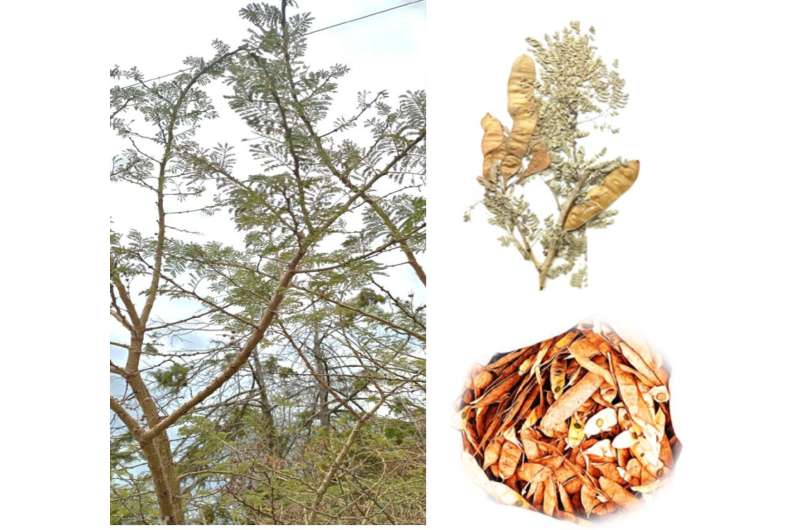This article has been reviewed according to Science X's editorial process and policies. Editors have highlighted the following attributes while ensuring the content's credibility:
fact-checked
proofread
Sustainable management and regeneration of endangered Senegalia venosa needed in Ethiopia, says study

A research team has identified the distribution and regeneration status of the endangered Senegalia venosa in Tigray and Gonder drylands. They found it has a poor regeneration rate due to factors like charcoal production and grazing.
The study emphasizes the need for further investigation into propagation techniques and the creation of favorable conditions for the species' growth.
Future conservation efforts should include establishing nursery sites, avoiding anthropogenic disturbances, and raising local community awareness for sustainable management and utilization of Senegalia venosa.
Ethiopia, with its rich flora of approximately 6,000 higher plant species, of which 10% are endemic, faces significant threats to its biodiversity due to habitat loss, over-harvesting, and climate change. One such endangered species is Senegalia venosa, found in the Tigray and Gonder lowlands, under poor regeneration status due to its use in firewood and charcoal production.
A study published in Tropical Plants on 4 June 2024, aims to assess the regeneration status of S. venosa, document its occurrence points, and identify major threats to inform conservation efforts crucial for both the species and local livelihoods.
This study highlights the restricted distribution of S. venosa to specific locations within the Hirmi forest vegetation ecosystem, found in only 11 sites between altitudes of 1,110–1,900 meters. The density of the species was highest at elevations of 1,700 to 1,900 meters, with 40 mature plants, 19 saplings, and 14 seedlings recorded in the sample plots.
The research shows that the regeneration status of S. venosa is poor, with mature plants having the highest density, followed by saplings and seedlings. Major threats identified include anthropogenic disturbances such as charcoal production and cutting, as well as livestock grazing and trampling.
The study indicates that these disturbances, along with climate change and habitat suitability issues, contribute to the species' critically endangered status. The research underscores the need for pertinent conservation measures, considering the species' medicinal value and the impact of agricultural expansion.
According to the study's lead researcher, Mehari Girmay, "This study underscores the necessity of raising the local community's understanding of how to manage and utilize plant species including Senegalia venosa in the study region sustainably."
In summary, Senegalia venosa exhibits poor regeneration and limited ecological distribution due to various factors, necessitating further investigation into its propagation and the creation of favorable niches and microclimates for its establishment.
Additionally, establishing nurseries and replanting in the study area, while avoiding anthropogenic disturbances and livestock pressure, are essential strategies to improve the species' population structure and recruitment succession.
More information: Mehari Girmay et al, Distribution, regeneration status and threats to Senegalia venosa (Hochst. ex Benth.) Kyal. & Boatwr. in Hirmi Dryland areas of Northern Ethiopia, Tropical Plants (2024). DOI: 10.48130/tp-0024-0017
Provided by TranSpread





















